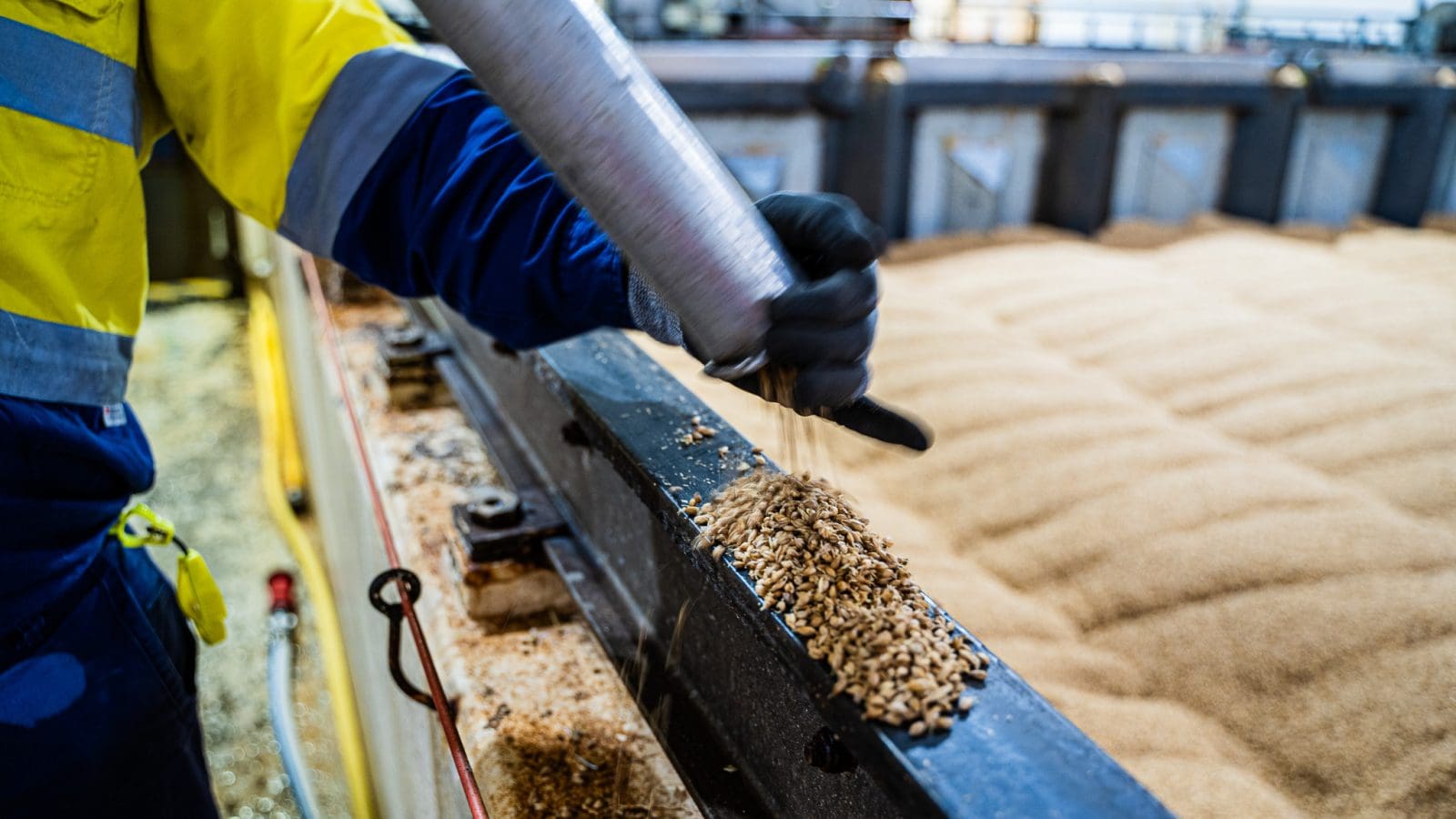
China’s return as a buyer of Australian barley looks like it is already having price implications for domestic consumers of malting and feed barley. Photo: Barrett Burston Malting
PRICES for barley jumped by up to $30 per tonne on Friday following the news that China was removing its tariffs on Australian barley.
Clear Grain Exchange reports 25 of the week’s 30 barley buyers purchased a total of 115,000t of feed and malting on Friday, which compares with just 35,000t of barley traded on the previous Friday.
“Prices improved significantly, with feed barley in WA increasing by $27/t in the Kwinana port zone from $306/t on Thursday to $333/t on Friday,” Clear Grain general manager Trent Smoker said.
“In the Melbourne zone, prices improved $40/t over the week.
“Offers have traded up to higher bids because buyers have been scrambling to outbid each other and secure grain
“The increase in buyer bids last week saw seller offer targets met, hence the increase in market activity.”
 Indications are that much of the barley being traded is in Western Australia, with some tonnage also changing hands in South Australia and Victoria.
Indications are that much of the barley being traded is in Western Australia, with some tonnage also changing hands in South Australia and Victoria.
Barley warehoused in the CBH system in WA is trading at minimum $330/t today on Clear Grain.
However, little is being traded in northern New South Wales and southern Queensland, where feedlots locked into barley are expected to keep paying competitive prices.
The Australian barley market has been factoring in the removal of the Chinese tariff since a review of the trade barrier was announced in April, and Kardinia Consulting principal Trevor Perryman said Friday’s announcement was met with universal applause and some relief.
“Some shipments of old crop are possible, most likely out of SA and WA, but the big change to global barley flows will come after the Australian new crop hits the bins later this year,” Mr Perryman said
“Although most of the 2022-23 crop is well sold and trade of the 2023-24 crop has been thin to date, the market did bounce by A$20/t on the offer side following the news.”
Mr Perryman said since the tariff was applied in May 2020, the Australian barley industry has sold more barley per annum at higher prices, often into new markets.
“International markets expect Australia to reclaim its US$1 billion trade with China and barley flows from European origin to pivot back to their traditional markets in Africa and South America.
“Despite that, it’s unlikely Australian traders will turn their backs on their new markets completely and immediately rush back into the Chinese market, as there are still phytosanitary issues to deal with.”
Grain Industry Association of Victoria president Simone Dax said liquidity in current-crop barley is low.
“Most of the larger grower parcels have already been sold,” Ms Dax said.
“The dry forecast and rumours of a potential China return have prompted many buyers to secure old-crop barley ahead of time.
“Moreover, with China’s recent announcement on Friday, old-crop barley is expected to remain well supported.”
Ms Dax said the northern domestic market, which since June has been supplied by southern Australia barley being discharged in the Port of Brisbane, could well be the first to feel the impact of competition from China.
“On the east coast, domestic barley prices will be supportive, especially in the northern regions due to the dry weather and forecast.
“Additionally, WA barley prices are now pointing towards China rather than potential vessels coming to Brisbane.”
Wilken Grain trader Andrew Kelso said malting barley prices kicked in Victoria as well as WA on Friday.
“It seems to be all pretty positive, and we’ll see today if there’s some follow-through,” Mr Kelso said.
“Maybe the Chinese are there already…and maybe the maltsters are saying ‘we need to get in now’.
“The problem might be for Queensland feedlots; poultry in Queensland can go back on to wheat, but not all feedlots want to.”
In South Australia, the market’s response to China reopening has been more subdued, and AW Vater & Co trader Tom Vater said one exporter lifted its bid by $5-$7/t on Friday on the news.
“Pricing will be reflected more on new-crop values I would think,” Mr Vater said.
While the Lower Eyre Peninsula and South East of SA have enjoyed good rain in recent weeks, Mr Vater said other areas are mostly looking for a top-up of soil moisture before spring arrives next month.
He said growers were therefore loath to forward sell, and would likely only engage at $300/t plus port equivalent for BAR1.
GTA welcomes news
The Australian grains industry has welcomed the announcement by
Grain Trade Australia (GTA) CEO Pat O’Shannassy said China’s announcement of the removal of its anti- dumping (AD) and countervailing duties (CVD) imposed on Australian barley exports have been welcomed.
“China’s Ministry of Commerce (MOFCOM) has determined that, due to a change in industry circumstances, lifting the AD and CVD duties would be in the public interest.
“This announcement is an important step forward in resuming the strong and mutually beneficial relationship between China’s and Australia’s barley industries.”
“Our view has always been that resolving the barley dispute is in the beneficial interests of both China and Australia, and respective industries.”
“Australian industry has respected and engaged fully with the processes under the dispute, and we look forward to and naturally welcome such an amicable resolution.”
Mr O’Shannassy said China has historically been a very important export market for barley from Australia over many decades, with very strong customer relationships and considerable cooperation between industry partners in plant breeding and technical support to meet China’s needs.
“Our barley exports to China peaked at 6.3 million tonnes in 2016-17 before falling to negligible levels once the duties were imposed in 2020, so we very much hope this decision will enable our trade relationships and exports resume.”
However, alternative markets for malting Australia developed in China’s absence are not expected to be dropped at short notice.
“The Australian industry will also remain actively engaged with the other markets that have been importing Australian barley at both a technical and commercial level.”
Grain Central: Get our free news straight to your inbox – Click here


HAVE YOUR SAY